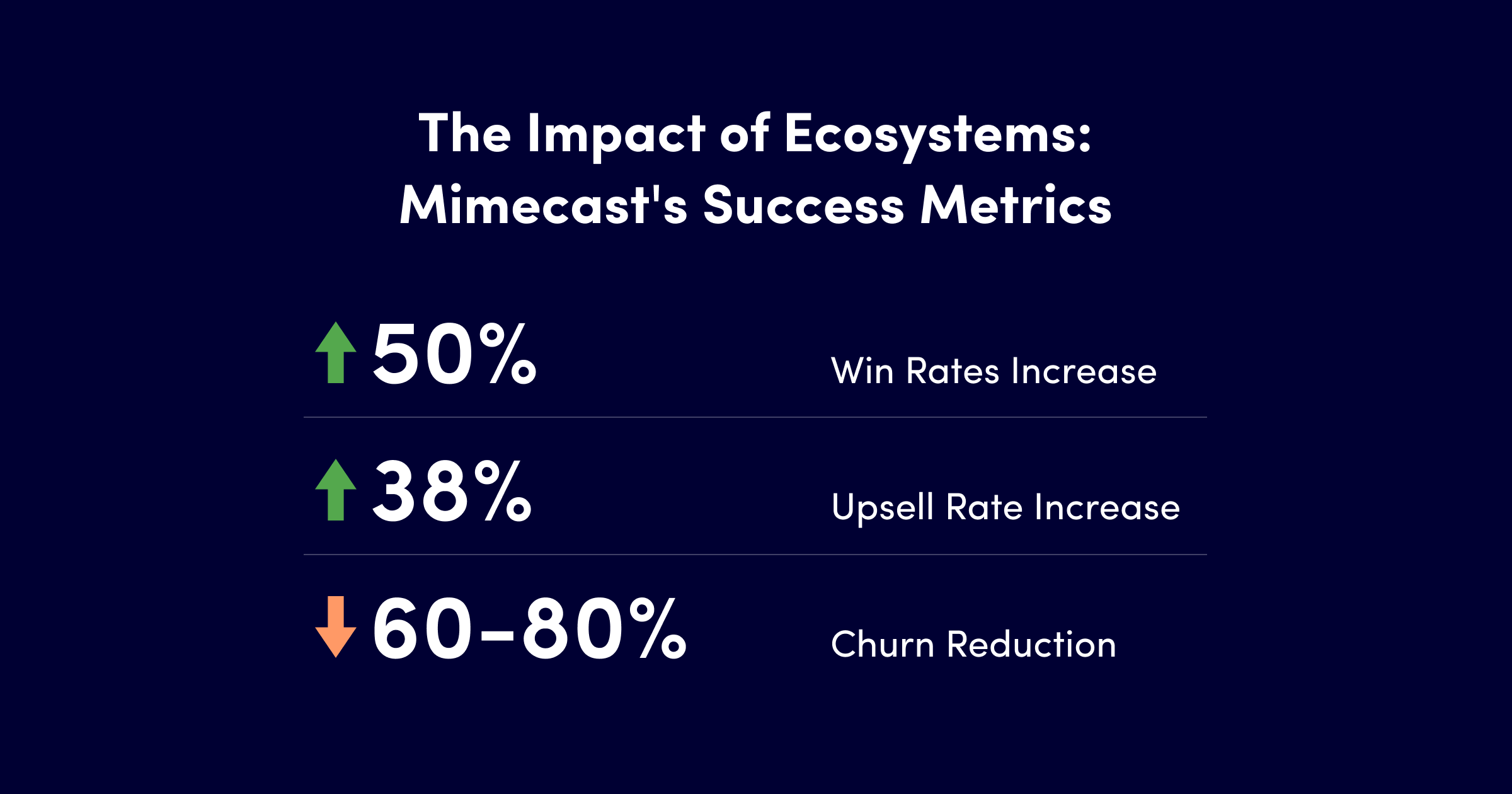Did you know that more than 150,000 employees have been laid off in the first quarter of 2023 alone, with more layoffs on the horizon?
Amid talk of an imminent global recession, tech companies are naturally spending cautiously. So, what can you do to remain profitable during this time? Our advice: focus on customer retention above all else. It will help you achieve a sustainable competitive advantage.
To improve customer retention during times of uncertainty, it’s important to think beyond your typical loyalty and rewards programs. Consider improving the user experience, revisiting your software architecture and internal processes, and making your products compatible with others. This requires an unwavering focus on digital innovation and improving the depth and breadth of your services to improve customer loyalty.
Rethink and improve your UX
Your customer retention rate is highly dependent on the user’s experience of your website, application, and/or platform. Make it easy for your customers to find information and accomplish their objectives — this will help earn their loyalty. If users can’t find what they need, need to jump through hoops to get to the screen they want, or simply don’t enjoy using your website or app, they will switch to a competitor.
Before you make changes to your UX, make sure you do your research and A/B testing to see if the planned experience resonates with users.
Case in point: Netflix’s redesign of their iPhone app is a good example of a well planned and tested change to the UX. The redesigned app has a new animation for both the launch and profile screens, new card transitions, and a new billboard layout. The way the suggested title is displayed on the screen now has a parallax effect. So far, the redesigned app has received largely positive reviews from users and has re-engaged a large portion of iPhone users.
To improve your UX, assess your user journeys in person and also gather data from sources such as audits, surveys, and data and analytics.
-
- Audits: Third-party audits performed by UX experts will bring you unbiased opinions and recommendations on your current UX.
- Surveys: User surveys will help you find the things your users wish you would improve about your UX.
- Analytics: Studying user behavior with the help of analytics will show which areas of your UX your users struggle with. For example, analytics may show you that your users stop using your app after reaching a particular screen or page even though you designed it to lead them to another page. Once you identify such pages, you can change their layout, the way information is presented on them, and experiment with them until they start performing better.
When analyzing user behavior, track data points such as:
-
- Screen views: To find screens that attract more views and replicate UX elements for less-popular screens.
- Session duration: To make sure your users are spending enough time on your app/platform. A reduction in session duration indicates decreased engagement.
- Time spent on different tasks: To make sure your users can get their tasks done with minimal friction and don’t have to take the long route to get the information they need.
- Task completion rate: To make sure the path leading to task completion is not resulting in people abandoning their tasks. Low task completion rates may be followed by user churn.
A thorough analysis of all of these data points, along with other types of user analysis, will helpguide the UX journey.
Make your products compatible with others
Identify the platforms your customers use along with your product, and introduce new integrations so your offerings work well with others.
The average business uses more than 200 tools, with each department using somewhere between 40 to 60 applications. When striving for ongoing efficiencies, businesses actively audit their technology stacks. They keep using products and services that integrate seamlessly with other tools because such products simplify user experience.
Built-in integrations and the capability for point-to-point (P2P) integrations with APIs are both important.
Consider a leading loud cybersecurity services provider. The company worked with Devtech to enhance product integration with other software systems—especially the third-party platforms it knew its customers were using. The company was able to reduce customer churn by 75%. They also generated new business by identifying the platforms its customers use and giving the customers the option to integrate with those platforms through APIs.
Expand your product line in both depth and breadth
Usually, companies focus their efforts on product depth or breadth, but rarely both at the same time. If you can invest in R&D and do both, you will give yourself a greater chance of retaining your customers.
By ‘product breadth,’ we mean having multiple products on offer, and by ‘product depth,’ we mean multiple variations of each product.
For example, GoDaddy started as a domain name registrar but now offers a complete suite of services that include web security tools, a VPN, and a website builder, giving it product breadth. The company also has different variations for each product line, giving it product depth.
To add product breadth, constantly look for new product ideas that will complement your existing products and services and cater to the same audience. In online services, you can add to product depth by:
-
- Adding some additional features to the same product
- Offering bundled pricing and packages
Conduct surveys and customer interviews and ask questions about your current pricing strategy. Give your users the option to upgrade and downgrade subscriptions or even build a custom offer for themselves. Keeping your customers at a reduced rate, for now, is better than losing them.
Devtech worked with a telecommunications company to expand their product line, and that helped them reduce churn and improve customer retention. With Devtech’s help, the company launched a cloud marketplace business unit, onboarded five independent service vendors (ISVs), and added virtual servers, backup storage, website builders, antivirus software, office collaboration suite, location based marketing services, and a payment gateway to its portfolio. Due to this initiative, the company was able to improve customer retention significantly. This engagement shows that by finding partners with complementary products and services and joining forces to bundle products and services, companies can expand their offerings and improve customer retention, even in times of uncertainty.
Improve internal processes and the tech behind your products/services
During times of uncertainty, people are looking to get the best value for their money. The quality of your products and services, and how quickly you ship new features and fix known issues, will help you give them just that.
You can improve your product and ship changes more quickly by switching to a microservice architecture for better performance. Implementing a microservice architecture is a massive endeavor, but it’s a change that reaps larger benefits in the long run.
A microservices architecture is an approach to building software products where each service within the product is independent of the other, and the entire application is a collection of services. For example, in Netflix, one microservice creates a list of movies for you, another determines the device you are using to enhance your viewing experience, and so on.
A microservice architecture helps you:
-
- Increase scalability: Since each service is independent, you can scale it up or down without affecting the others. You can measure the demand of each service, calculate its maintenance costs, and dedicate resources to it exclusively and according to the load.
- Resist application failure: If one service fails or stops working, it doesn’t take the entire application down with it. You can identify and isolate problems and fix them quickly.
- Evolve more quickly: Independent services allow for quick deployment of new features. You can roll out new features and roll them back if they don’t work out.
When switching to a microservices architecture, it is important to change the way you build your software products and adopt DevOps best practices around continuous integration, deployment, and delivery. These processes reduce the time to ship new features and bug fixes.
-
- Continuous integration: Developers can merge new code and code changes to the central repository as they make those changes.
- Continuous deployment: New code from the central repository is automatically deployed to a testing environment.
- Continuous delivery: Code that makes it through the test environment is released to customers.
All of these processes are automated, and ideally, the only choice you have to make is when a piece of code makes it from one environment to the other.
We recently used these processes, along with other DevOps best practices, to build a customer onboarding solution for one of our customers (a global cybersecurity leader). Thanks to continuous integration, deployment, and delivery, we were able to ship the product quickly. The product reduced its onboarding process from 77 days to just three days.
Redirect your resources to customer retention
Survey results show that 51% of CEOs focus on growth as their top priority, while only 15% focus on products, services, and customers. Because they are focused on growth, most of their budget goes to marketing and sales. The budget dedicated to customer retention comes out of the marketing budget and is usually a 70%-30% split between acquisition and retention. However, the cost of customer acquisition is generally a lot more than customer retention. The money you spend on customer retention has significantly greater ROI than what you spend on customer acquisition.
Also, your efforts to acquire new customers won’t amount to much if you don’t retain them for more than a few months.
Dedicating only 30% of your marketing budget to customer retention will not get you the results you need, especially in times of uncertainty. Instead of customer acquisition, focus on retention and generate revenue through subscriptions or upselling to existing customers.




socialbookmarknew.win
Wohh just what I was searching for, regards for putting up.